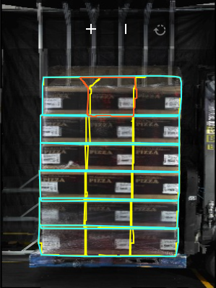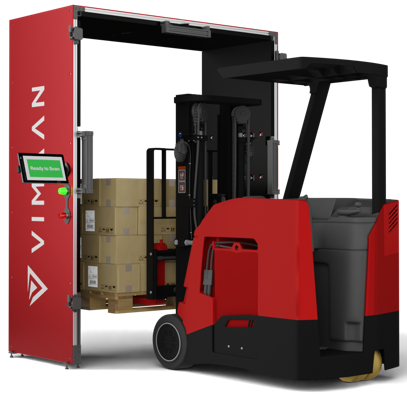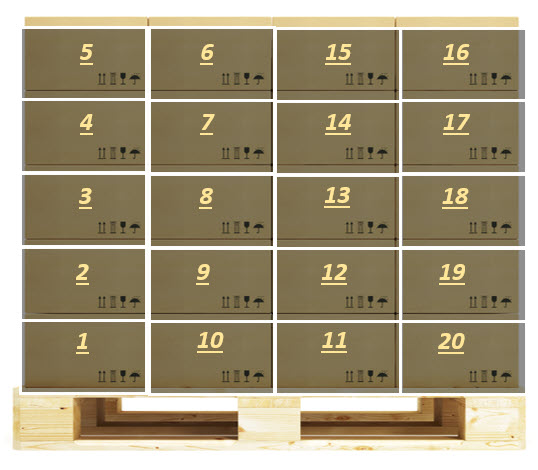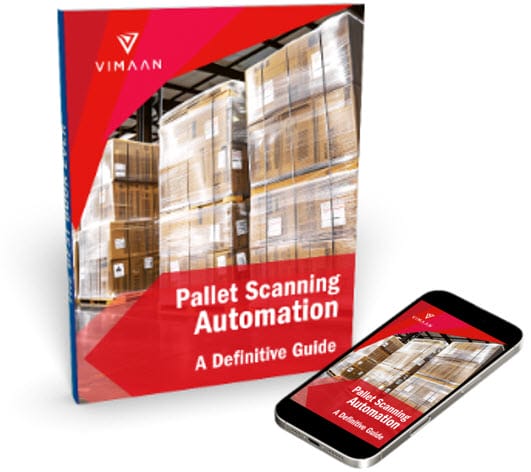Your browser is out of date, for the best web viewing experience visit Browse Happy to upgrade your browser today.
In warehouse operations, Ti-Hi (or Tie-High) counting is a crucial method used capture the case quantities included on a single pallet. The term “Ti” refers to the number of cartons, cases or units placed on a single layer (the tie) of a pallet, while “Hi” refers to the number of layers stacked vertically. By calculating the Ti-Hi for each pallet, warehouse managers can process and ship outgoing pallets faster and with greater confidence, However, despite its importance, Ti-Hi counting presents a range of challenges for warehouses, impacting both operational efficiency and inventory accuracy.

One of the most significant challenges in Ti-Hi counting is the reliance on manual processes. Workers are often tasked with physically counting the number of units in each layer (the tie) and the number of layers stacked (the high). This method is not only time-consuming but also highly prone to human error, especially in fast-paced warehouse environments. Errors can occur due to miscounts, miscommunication, or simple fatigue during long shifts.
These mistakes lead to inaccuracies in inventory records, causing issues down the supply chain. For instance, if a pallet is miscounted and recorded incorrectly, the warehouse may overestimate or underestimate its available stock. This can lead to inventory discrepancies, delays in order fulfillment, and ultimately, customer dissatisfaction.
Ti-Hi counting becomes particularly challenging when dealing with products of varying sizes and packaging types. Some products may not fit neatly into standard configurations, requiring custom stacking methods or alternative palletizing strategies. This variability makes it difficult to apply a consistent Ti-Hi count across all pallets, forcing warehouse workers to adjust their counting methods for each new product or shipment.
Fortunately, warehouses using PalletSCAN 150 have been able to improve the speed and quality of their Ti-Hi counting workflows, saving themselves time in both put-away and outbound customer shipments. In addition to case counting, PalletSCAN 150 can perform SKU verification against the WMS to ensure the right item has been counted.

PalletSCAN 150 improves Ti-Hi counting speed and accuracy

Many warehouses still rely on paper-based systems or outdated software to record and/or validate pallet counts, leading to delays in updating inventory records and achieving real-time visibility into stock levels. This lack of real-time data can cause significant operational inefficiencies, such as taking receipt of pallet with the wrong quantities and even worse sending incomplete orders a customer. PalletSCAN 150 conducts Tier Height case counts in seconds and provides automatic operator feedback.
.
Training warehouse staff to accurately perform Ti-Hi counting is another challenge. New employees or temporary workers may not fully understand the importance of Ti-Hi counting or the proper method for calculating it. Inconsistent training and knowledge gaps can result in varying levels of accuracy among workers, further increasing the likelihood of counting errors.
Additionally, the fast-paced nature of warehouse work, combined with high turnover rates in the industry, makes it difficult to maintain consistency in Ti-Hi counting practices. Without clear procedures and continuous training, errors in counting can become widespread, affecting overall warehouse performance.


While some warehouses have adopted technology to automate certain processes, many still lack the tools needed to streamline Ti-Hi counting. Traditional RFID and barcode systems are limited in their ability to automate this task, as they primarily track individual units rather than the configuration of pallets. This forces workers to rely on manual counting methods, even in technologically advanced warehouses.
Ti-Hi counting is an essential process for optimizing warehouse efficiency, but it presents several challenges. Manual counting, product variability, a lack of real-time data, inconsistent training, and technological limitations all contribute to the difficulties warehouses face in maintaining accurate Ti-Hi counts. As warehouses seek to improve operational efficiency, investing in automation tools—such as computer vision technology—can help alleviate these challenges by providing accurate, real-time data and reducing reliance on manual processes.
As warehouse operations scale, the complexities surrounding pallet tracking and management increase significantly. Whether it’s verifying product SKUs, ensuring shipment accuracy, or optimizing warehouse space, pallet scanning plays a pivotal role in maintaining order and reducing costly errors.

See firsthand how this diverse set of pallet scanning systems solve the most common and time intensive warehouse challenges including: